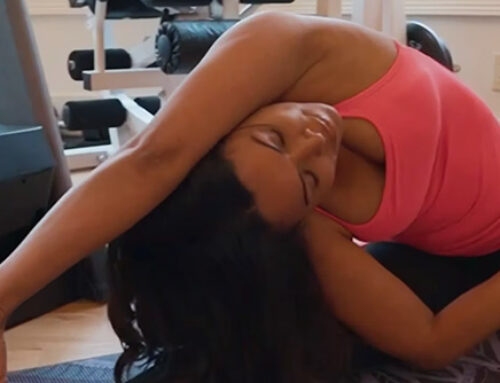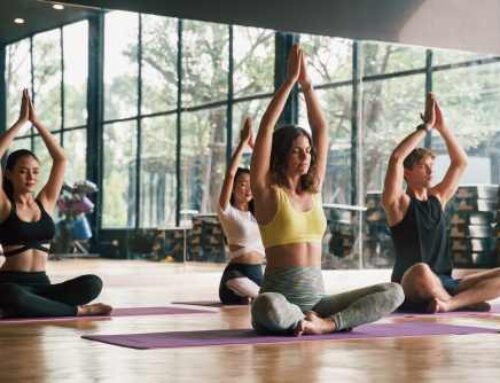Yoga teaches us that healthy balance comes from properly stretched, opened, and stable functions in your spine, hips, and the surrounding structures. In other words, balance is not only something you can have but something you can refine! Adding Revolved Triangle Pose to a standing sequence is one way to do it. Getting the right stretch in your hamstrings, calves, and shoulders can do a lot to refine your structural balance, which has beneficial effects across your body, including stress management and healthy digestion.
You should know now, however, that Parivrtta Trikonasana is an advanced pose that challenges your balance, deeply twists your spine, and requires a challenging hamstring stretch. Not everyone will be able to pull it off, but if you start slowly and avoid the common mistakes that I’ve listed for you below, you can build up to benefiting from this open, balancing pose.
Benefits of Revolved Triangle Pose
The challenges of Revolved Triangle Pose come with benefits in mobility, core balance, and flexibility in your hamstrings. The main movement of Parivrtta Trikonasana opens your heart and stimulates your core, which promotes consistent, healthy digestion. The clarity provided by this movement can help you ease physical pain as well as improve your focus on a daily basis.
Flexibility represents one step towards improved balance. Increasing circulation in your lower spine and pelvis can help you maintain stability while this stretch in your leg muscles improves their function as well. By learning to rotate your spine without faltering or skewing your torso and legs, you can begin to master greater stability in your standing sequences.
With an open chest and heart, stretched shoulders, and an accentuated stretch in your lower body, you can use Revolved Triangle Pose to maintain a sense of balance as well as improve many bodily functions.
How to Do the Pose
There are several poses you can use to transition into Revolved Triangle Pose, including Mountain Pose or Pyramid Pose. I like starting with Pyramid because it will start the pose with your legs where they need to be – straight, about 3 feet apart, with hips square and facing forward.
Turn your left foot forward and your right foot out a quarter turn. As you exhale, lean your whole torso forward directly over your front leg, making sure to keep your spine long and straight. This is really important! If you feel your back rounding, you can’t lean further into the pose. Notice your back heel as well – the first mistake beginners make is to let their heels come up.
In yoga, grounding creates mindfulness, which is the first step towards balance. Physical stability and mental calm go hand in hand! This is why the simple act of letting your heel come up, which can disrupt your balance, can prevent the pose from improving your mood.
In your forward bend, rest your right hand on your opposite shoulder or on either side of your foot – whichever feels more comfortable for you. As you breathe in, put your left hand flat on your tailbone, breathe out, and begin to twist your torso. The key here is to open your chest without letting your tailbone turn to either side or tuck in (that’s why your hand is there). Use your hips to keep it straight.
Inhale and raise your left arm towards the ceiling, keeping your shoulders directly over one another. Carefully lift your gaze to your raised hand and deeply breathe for 30 seconds or up to a minute.
Make sure you’re not forcing the twist in your abdomen or lifting your heel. Relax as you unbend and prepare to do the pose again with the opposite arms and legs.
The Takeaway
Revolved Triangle Pose can be transitioned into from many poses but isn’t the easiest pose out there. The full twist requires flexibility and balance. Don’t force it! Follow the above instructions to carefully work your way into the full Revolved Triangle Pose and reap its benefits in flexibility, healthy digestion, and balance.





Leave A Comment